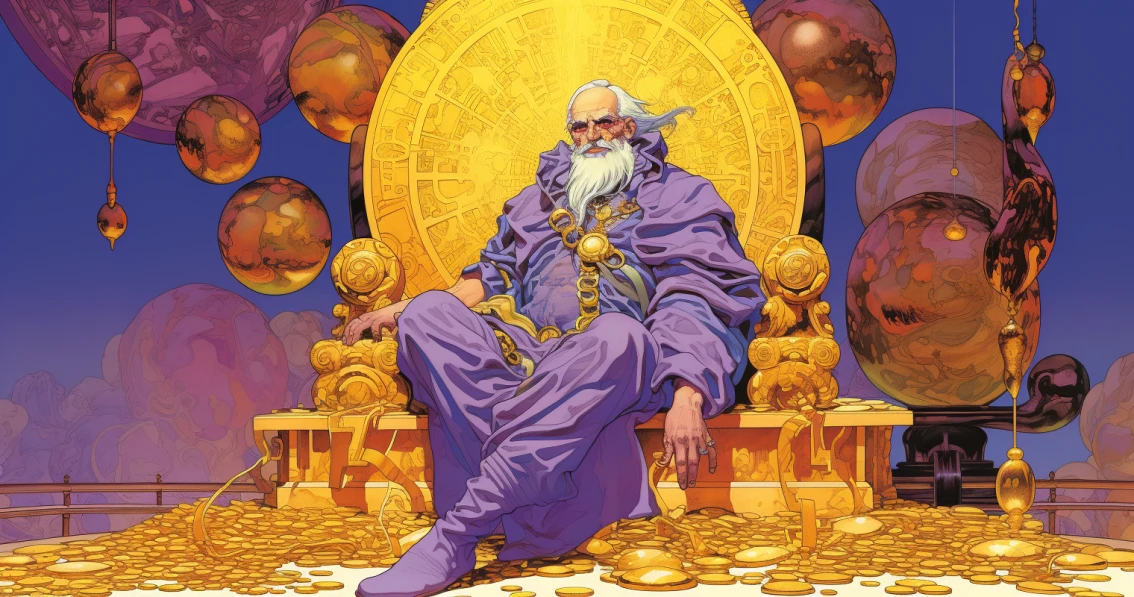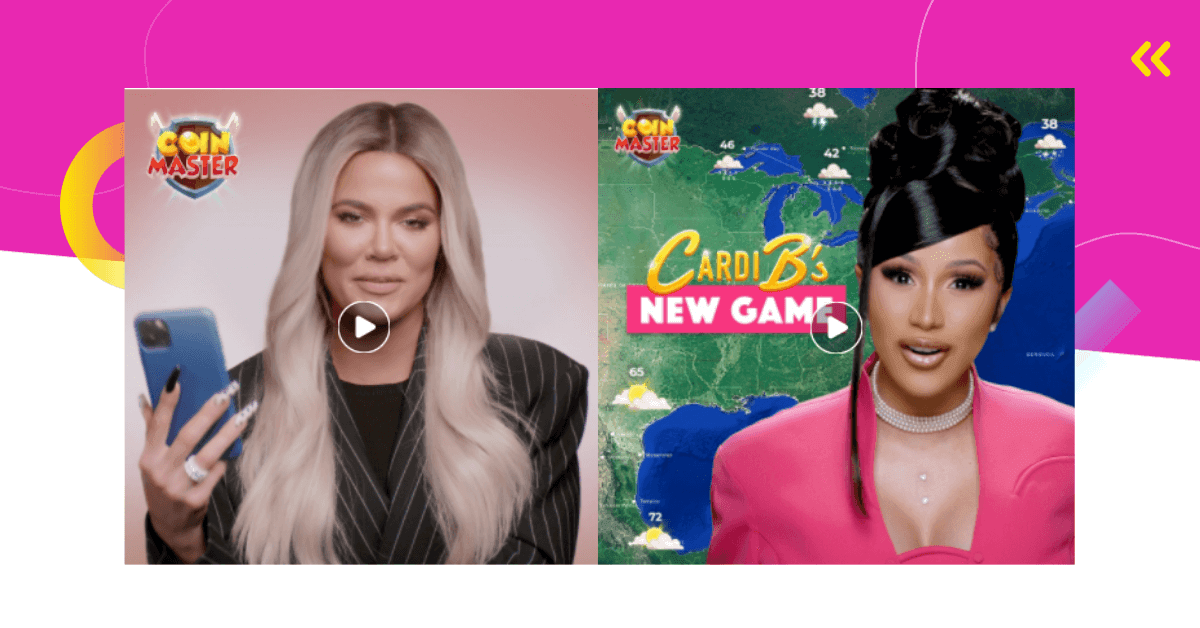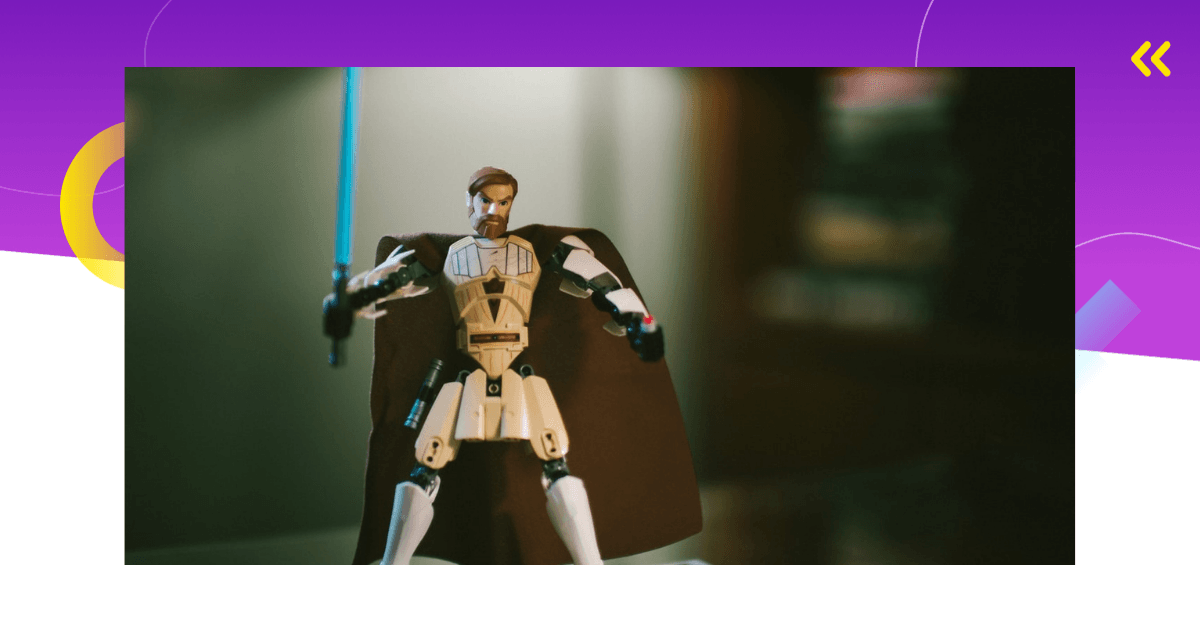Many game developers are wondering: how do you monetize a mobile game, and which mobile game monetization model should you choose? We answer all of that and more in our complete guide to game monetization.
By reading this extensive guide, you’ll learn how to successfully monetize mobile games, come up with mobile game monetization strategies, and discover monetization trends.
Let’s begin!
What Is Mobile Game Monetization?
Simply said, mobile game monetization is the process of making money off a mobile game.
It includes different strategies and methods that game developers use to generate revenue from their games.
Building a quality mobile game takes a lot of time, effort, and resources. None of this is simple, and it’s not cheap either.
For this reason, you need to make sure your game is profitable enough to cover development costs. Then again, your ultimate goal is to make money, not to maintain a zero balance.
While some games become wildly profitable as soon as they get launched, for others, it takes years until they finally blossom.
On the other hand, some games fail instantly.
All this depends on the quality of the mobile game but also on how developers handle monetization from scratch.
There are different ways to monetize a game, and your task is to find the right one. Luckily, we’re here to help you with that. Here are the most important monetization tips.
Mobile Game Monetization: The Planning Phase
When someone says, “planning a mobile game,” what is your initial thought?
Naturally, a lot of developers first think about the idea behind the game.
Sure, the idea is important.
However, thinking about how you will monetize your game is equally important.
The thing is, you should be pondering how to monetize a game from the earliest phases of game development.
As soon as you start building a game, you should choose the primary monetization model. Once you do this, you’ve laid out the groundwork for your game.
The monetization model you choose for your game will have an impact on many aspects of your game. For example, the game’s layout, level difficulty, features, etc.
For these reasons, it’s crucial to think about mobile game monetization during development. This is the only way to make sure your gameplay and monetization model will work well alongside each other.
Don’t want to scare you – but this is one of the things that can make or break a game.
Additionally, make sure to set and track monetization KPIs right from the start.

Okay… So How Do Mobile Games Make Money?
There are many ways to monetize games.
To get a better understanding of how mobile games make money, you should take a look at today’s game market and mobile game business model.
At the moment, most of the games on the market are free-to-play games. These games make money by exposing players to microtransactions and/or in-game ads.
The other, less frequent type of game on the market is paid games. If players wish to install and play these games, they need to pay a one-time fee first.
It wasn’t always like this, though.
In the early days of the app stores, paid games ruled the mobile game market.
However, nowadays, most players expect mobile games to be free.
For this reason, in this guide, my main focus is on monetization strategies for free-to-play mobile games (aka F2P games).
The biggest challenge in making money from F2P mobile games is making them work for both sides in the process – game developers and players.
Developers want to earn as much money as possible, while players want to enjoy the games for free.
This is where it gets tricky.
A lot of developers follow the money to the point they neglect their players. They ruin their user experience, block the players’ progress, etc. And sure enough, a lot of players get frustrated and angry to the point they uninstall the game.
How to avoid this from happening?
One word – balance.
Players know the developer needs to make money. For this reason, they expect to see monetization features in mobile games. As long as developers don’t go overboard with them, they will be able to keep and monetize their players.
How Much Money Can I Make With a Mobile Game?
We hear this question very often – many developers are wondering how much money they can earn from a mobile game. The answer is – a mobile game has the potential to earn you billions of dollars. However, you need to create a great game and master game monetization.
Start by learning about these mobile game monetization models.
Mobile Game Monetization Models
As I mentioned earlier, picking out a mobile game monetization model is one of the first steps in the monetization process.
To define, mobile game monetization models are the strategy the developer uses to make money off the game.
If you look at the free-to-play game listings in the app stores, you will notice they say which mobile game monetization models they use.

This way, the players know what monetization features they can expect from the game. For example, if they will need to watch ads or not.
Let me guide you through the four most popular monetization models for F2P games.
1. In-App Purchases
In-app purchases (IAPs) are the leading monetization model for mobile games. According to Business of Apps, 79% of mobile games monetize with in-app purchases.
IAPs the basis of what we call a freemium game economy. This term is coined from the words free and premium, and here’s why.
In this kind of economy, players don’t need to pay anything to install and play a game. However, if they crave a premium in-game experience, they can make in-app purchases.
In-app purchases are also known as microtransactions and in-game purchases. Whatever the term you stumble upon is, they all apply to the same thing.
When players make purchases, they pay real money to get certain items or features from the game. Some examples of in-app purchases are extra lives, coins, weapons, moves, boosters, etc.
What should you offer in your game?
Well, this very much depends on your game and its genre. The main thing you need to think about is – what do my players need and crave most?
For example, if your players are craving progress, you shouldn’t focus on selling them extra content. Instead, you should offer them items that will help them advance.

What Can You Sell and Where?
The center of almost every game economy is the in-game store.
In most cases, players can find in-game stores by following an icon on their home screens.
In these virtual stores, players can find different things to purchase. Sometimes, all the offers in the store are sold for real money. In other cases, players can get some of the offerings with real money and others with in-game currency.

Consumables
This is the most common type of in-app purchase found in mobile games.
Once players purchase a consumable item and use it, it disappears for good. Some examples of consumable items are in-game currencies, boosters, and health.
In-game currencies are the most common type of consumable items we can find in mobile games. Some of the most popular choices of currencies are gems, diamonds, and coins.
Let’s say a player bought some gems from the in-game store. After the purchase, the player used the gems to skip wait times three times. Now what? All the gems have been consumed.
The only way to get this amount of gems again is to repurchase them.
However, it is important to mention that games should give out small amounts of consumable items through gameplay too.

Non-Consumables
Non-consumables are exactly the opposite of consumable items. Once players purchase these items, they get permanent access to them.
For example, non-consumable items include selling access to a new level, game characters, cosmetic items, etc.
Say a game includes different characters. Games usually give players a basic set of characters. As they progress through the game, they gradually unlock new ones.
However, if the players want a special character they did not unlock yet, they can get them instantly. Once they do, this character is all theirs – without an expiry date.

Popular In-App Purchase Features
Besides knowing the categories of in-app purchases, it’s useful to know some common forms they come in.
One of the most common IAP features we can find in mobile games is time-limited offers. These are discounted offers, only available for a set amount of time (e.g., 24 hours).
Bundles are another frequently used in-app purchase feature. These are basically different items put together in one purchasable pack. Also, they commonly come at a discounted price.
A lot of games purposely make players wait to finish some tasks in the game. This is where they stumble upon monetized wait timers. Players can then pay to skip wait times and continue with the game.
One of the main things players want from games is to progress fast. For this reason, a lot of games offer them something that can directly help them do that – purchasable boosts.
Finally, there are items that don’t help players progress, but they are still popular purchases.
They are called cosmetic items, and they change the appearance of characters or items in a game. For example, clothes, hairstyles, weapon skins, etc.
These are just some of the in-app purchase features that can be found across popular mobile games. If you want to discover more of them, check out our list of top game monetization features.
2. In-App Ads
In-app ads are the second most popular way to monetize a game.
In this model, game developers make money by serving advertisements to players. Players can get all the features in these games for free, but they have to watch ads as they play. In most cases, these are ads for other mobile games or non-gaming apps.
There are three sides involved in the ad-serving process:
- players
- publishers
- advertisers
Players are okay with this monetization model because it grants them free gameplay. Developers need to display as many ads as possible to make money. At the same time, advertisers are happy to show their ads to potential users.
However, ad monetization is something you need to be very careful about.
The thing is, players don’t really like ads; they tolerate them. Plus, there are always some players who really hate them.
If you plan on monetizing your game with ads, you need to be ready for a lot of “too many ads” reviews in the app stores.

In-App Advertising: The Process Behind It
Wondering how exactly you get ads to appear in your game?
The ad-serving process happens through an ad network. This is a platform that connects publishers and advertisers.
According to AppsFlyer, the top mobile game ad networks for in-app ads in 2022 were AppLovin, Unity Ads, Meta, TikTok for Business, Google Ads, and ironSource.
In an ad network, publishers post whenever they have space they want to fill out with ads. The advertisers then bid on those ad placements hoping to win the ad slot. Finally, the ad network then picks out the winning ad.
Ad networks should aim to bring the publisher as much revenue as possible.
There is one mobile game metric that reflects the revenue earned from ads – eCPM. All publishers looking to make money from ad monetization need to understand this metric.
ECPM stands short for effective cost per mile. Basically, it shows the amount of money a publisher earns for one thousand ad impressions.
Wondering what an impression is? An impression is counted every time an ad appears on the users’ screens.
Generally, when it comes to eCPMs, the rule is – the higher they are, the better.
Mobile Game Ad Formats
If you decide to have ads in your game, you have plenty of options to do so.
There are different types of in-game ads you can use, and they are called ad formats.
Publishers can use only one or more ad formats at the same time.
Moreover, it’s important to mention that different ad formats come with different average eCPMs. This means that some of them have a higher money-making potential for the publisher.
Let’s go over the top five ad formats in mobile games.

Interstitial Ads
You know those ads that suddenly appear during the game and take over the whole screen?
This is an ad format called interstitial ads.
They can be either static or dynamic (interstitial video ads). These ads typically appear where the gameplay naturally pauses. For example, in between levels or stages.
After watching the ad (e.g., 10 seconds), players can exit the ad and come back to gameplay.
Game publishers need to be careful with this ad format because players often find them disruptive and annoying.
Finally, the eCPMs for this ad format are solid, averaging from $4 to $6 (ironSource).

Rewarded Video Ads
Rewarded video ads are the opt-in ad format. Unlike interstitial ads, players aren’t obliged to watch them. Instead, they voluntarily choose to do so.
Why?
If players watch these ads, they get a reward in return. For example, in-game items, currency, lives, points, etc. Whatever fits the gameplay.
The fact that players choose to watch rewarded ads is what makes them such a popular ad format for not only monetizing a game but boosting engagement and retention as well. It’s not surprising that as many as 68% of players like this format. (TechCrunch)
Just like interstitial ads, rewarded video ads take over the users’ whole screens. However, players have to watch the entire ad if they want to receive the reward. It’s up to the game publisher to decide how many rewarded ads players can watch in a set amount of time to keep game resources balanced.
The eCPM range for this ad format is from $10 to $50, which is better than most other ad formats (ironSource). Rewarded video ads are the most popular ad format among game developers – 82% of developers use them (DeltaDNA).
Here’s an example of a successful rewarded ad.

Above is an example of a rewarded video ad placement in Subway Surfers. In this leading arcade game, players can get boosts like a Hoverboard or Headstart that give them an advantage. They’re met with a choice – they can spend their precious coins to get these boosts or watch an ad. The benefits of watching an ad are simple and clearly communicated, which is essential when using this ad format.
For more examples of excellent ad placements, go here.

Playable Ads
This ad format is not made just for watching.
Playable ads are an interactive ad format that allows users to play the advertised game. More precisely, a mini version of the game. This way, players can try the game out before deciding to install it.
Basically, playable ads are a type of interstitial ads. Since they are interactive and engaging, they bring publishers higher eCPMs than interstitial ads.
As a game publisher, it can be tricky to display this type of ads, as some of them may be from your competitors.
Here’s an example of a successful playable ad.
Royal Match is a popular match-3 game, which is instantly clear when interacting with this playable ad. Its goal is to get players familiar with match-3 mechanics and get them hooked on the gameplay. It works as a tutorial, like most other playable ads. After users complete the match-3 puzzle, there’s the option to download the game or retry.

Banner Ads
Banner ads are the oldest ad format on this list, and they are not as popular as they used to be.
Banners are rectangular ads that appear in specified areas of the players’ screens during gameplay. For example, on the top or bottom of the screen. They are static and usually contain text or images.
As they appear, banner ads remain in their placements for the whole time players use that screen.
Banner ads are not well known for high eCPMs, so they are usually combined with other ad formats.

Offerwalls
Offerwalls are another opt-in ad format.
This ad format looks like a mini shop inside the game. In an offerwall, players get a “wall” of actions they can complete to earn in-game rewards.
For example, players may be asked to complete a survey, install another game, or make an in-app purchase in another game.
Offerwalls are the ad format that comes with the highest eCPMs for publishers.
3. Subscriptions
When someone says subscriptions, what comes to your mind? My mind instantly goes to Netflix or HBO.
Well, just like people pay monthly fees to access these platforms, you make players pay fees to access something in your game.
In mobile games, subscriptions are a type of in-app purchase.
However, they became so popular that they are now viewed as a separate monetization model.
Mobile game subscriptions work as one-time purchases that give players access to extra content. If players want to remain subscribed to them, they need to regularly pay the fees.
What do I mean by regularly?
It’s completely up to the developer. They can make subscription plans weekly, monthly, biweekly, etc.
In most cases, subscriptions work as an addition to the main monetization model. For example, even if a game mainly earns money from in-app purchases, it can also include subscription offers. By doing this, the game should get another valuable cash stream.
This model is most suitable for games that have engaged user bases. After all, by paying a subscription fee, players are committing to the game. In return for their commitment, a subscription should bring them good value for money.
Types of Subscriptions in Mobile Games
Let me run you through the most common types of subscriptions in mobile games.

Battle Pass
Battle pass subscriptions are the most popular type of subscription in mobile games. They appear in all sorts of games, from hardcore to casual.
Here’s how they work.
A game offers players a battle pass plan to purchase, e.g., at $5.
By paying this fee, players get access to different rewards. However, unlike in-app purchases, they don’t get all the rewards instantly. Instead, they have to play and progress through the game to earn the rewards.
All of this lasts for a set amount of time. For example, 15 or 30 days. These periods are usually called battle pass seasons. If players want to participate in another battle pass season, they need to pay the fee again.
Not all battle passes require paying, though.
Battle passes usually come in two versions: free and paid. The free version offers players a limited battle pass experience, while the paid version offers a premium experience.

“Remove Ads” Subscription
This type of subscription can be found in mobile games that rely on ad monetization.
Just like its name suggests, a “remove ads” subscription allows users to pay a fee and get rid of in-game ads.
Some games make this subscription limited to, for example, one month. In other games, it is a one-time purchase that permanently removes ads.

VIP Subscription
Want to give your subscribers VIP treatment? Then this subscription is the right choice for you.
A VIP subscription offers players a set of exclusive benefits for some time. For example, you can bundle up daily rewards, ad removal, a stash of currency, etc. All the things you believe will make your players feel special and valued.
4. Hybrid Monetization
When it comes to mobile game monetization, you can mix apples and oranges.
Here’s what I mean by that.
To monetize a game, you don’t have to rely on a single monetization model; you can use more of them simultaneously.
This means you can combine all three models I’ve mentioned above. This kind of model is frequently called a hybrid monetization model.
Now, you’re probably wondering how does it make sense to mix different models.
Every mobile game monetization model leverages a group of players. In-app purchases cover the payers, and in-app ads leverage the non-payers. Subscriptions should cover engaged, highly valuable players.
When combining models, one of them should be the main one. This model should be the center of the monetization strategy and the primary revenue stream. Others should only work as an addition to it.
Hybrid monetization helps developers tap into multiple revenue streams. As a result, the game should be able to monetize more players.
Common Combinations of Mobile Game Monetization Models
Thinking about combining monetization models? Here are some frequent combinations that work for many successful games on the market.

In-App Ads + In-App Purchases
If you decide on this combo, you could earn money off your paying players, as well as off non-payers.
In most cases, in-app purchases are the main model. The role of in-app ads is simply complementary.
In this model, it’s very important to be moderate. If players see too many offers and too many ads, this will ruin their user experience. For this reason, publishers usually decide on opt-in ad formats such as rewarded video ads.

In-App Purchases + Subscriptions
If your focus is on paying players only, then this is the model for you.
Again, in-app purchases are usually the central model. With them, you can give players different options to enhance their gameplay experience.
However, this won’t be enough for some players, and they will crave to subscribe for in-game benefits. These are usually engaged players who want to get the best value for their money.

In-App Purchases + In-App Ads + Subscriptions
More and more game developers go ahead and combine all three models.
With this combination, they can leverage the widest range of players. This includes different groups of paying and non-paying players.
In this combination, in-app purchases are typically the main strategy. The other two work as extra revenue streams. With three revenue streams, it is of crucial importance to balance them out.

What Is The Best Mobile Game Monetization Model?
Unfortunately, I can’t give you a definitive answer to this question. However, I can help you figure out what might work for your game.
When picking out a monetization model, you need to consider your game’s genre. Different genres call for different monetization approaches.
For example, hyper-casual games almost always rely on ad monetization.
Why?
This is because players play these games to kill time and to have some fun. They don’t stick around long in such games. For this reason, hyper-casual developers throw ads at users to make money off them ASAP. For such a game, in-app purchases simply don’t make sense.
On the other hand, hardcore and mid-core games almost always rely on in-app purchases. These games have more content to offer, and players tend to play them for longer. As a result, there is a better chance that players will spend money on these games.
On top of this, you should also consider your competitors.
Your biggest competitors are the games within your genre. You should pay special attention to successful games that are similar to yours. Simply play these games and consider how you feel about them as a player.
By analyzing the competitors’ monetization strategies, you should get an idea of what could work for your game.
Mobile Game Monetization Strategy and Tips
Here are some general tips for monetizing a game.
Strategize from Day 1
Here’s where many inexperienced developers go wrong – they first design all aspects of the game and then they try to fit a monetization model into it. That leads to badly implemented monetization and ruins both the player experience and your chances to earn revenue from your game.
The right approach is to do it the other way around. Before you even develop the game, you need to have a clear idea of which monetization model(s) you’ll use and why.
Furthermore, the monetization model needs to be built into your mobile game from day 1. More specifically, it needs to be deeply integrated with the game’s UX and core game loop. That goes for all monetization models – in-app purchases, ads, and subscriptions.
That results in a seamless integration of the monetization model and the game itself, making it look natural, which in turn tends to lead to more purchases and more ads watched.
Retaining Players Is Critical
A lot of monetization guides say, “Think about retention before monetization.”
I say – think about both as early as possible.
Let me explain what they mean by that.
User retention is a metric that tells you how good your game is at keeping players. Sadly, it’s well known that players naturally tend to lose interest in games early on.
For a monetization strategy to work, the game should be able to retain players.
How do you do this?
Well, you do everything in your power to make the game as engaging as possible. To achieve this, developers usually rely on some tried and true retention techniques. This includes:
- Push notifications
- Social features
- In-game events
- Daily rewards
For the best results, you should aim to include more than one retention tool in your game.
Whatever your game’s genre is, you should aim to improve retention rates. However, for some games, retention is more important than for others.
These are the games that monetize with in-app purchases. The thing is, these games need to convince their players to spend money. This is not an easy task, and it usually takes time.
Therefore, the longer players play, there is the higher chance they will open their wallets.
Test Everything
Okay, let’s say you’ve picked out and configured monetization model(s) for your game. You have a good feeling everything will work as planned. After all, you put a lot of thought into all of this.
Now what?
Testing. A lot of it.
You should start A/B testing different monetization features in the beta phase.
By testing, you can find out what’s working and what’s not. With it, you may find out some features work as planned, while others need some tweaking.
Testing can also show you that no matter how much you like something, you might need to remove it because it’s simply not working.
But what if you really, really like a feature, but it works horribly?
Lose it. When it comes to monetization, there is no room for emotional attachments. It’s only the results that matter.

What Can You Test?
One of the greatest things about mobile games is that you can test almost everything.
Let me give you some examples.
If your game includes in-app ads, you might find out that you’re displaying too many ads. That means that you should try reducing the number of ad placements in the game.
Another thing you can discover is that players are reacting negatively to a certain ad format. With this in mind, you should consider focusing on other ad formats.
In-app purchase monetization also requires testing. There is no better way to determine what you should offer your players and how much you should charge them.
For example, you may find out that players aren’t responding well to the offers in your store. This means you should try to test different price points and offers.
In order to A/B test any of this, you should split your audience into two groups. For one group, you leave the existing features. For the other, you try something new. Then, you keep on doing this until you finally get the results you’re happy with.
However, the testing doesn’t stop here. After you launch the game, you should keep testing monetization features. There is always room for improvement.
Stay Away From Pay-to-Win
There’s a trap some developers fall for when utilizing in-app purchases. They design a monetization system that consists of paywalls that let players access the game fully. That forces players to spend if they want to advance in the game. Furthermore, this model allows players to use money to gain an advantage over other players. This approach veers to pay-to-win, which is despised by most players, and rightly so.
Instead, the items players can purchase should be a bonus, and most importantly, players should be able to play until the end without having to pay. That makes in-app purchases an option, not a requirement.
Mobile Game Monetization: Wrapping Up
Hopefully, this article helped you better understand mobile game monetization.
Now, you should be ready to read some more advanced stuff.
We have written plenty of detailed articles about monetization, so make sure to check them out. You can also subscribe to our newsletter and stay up to date with our latest posts!







Comments